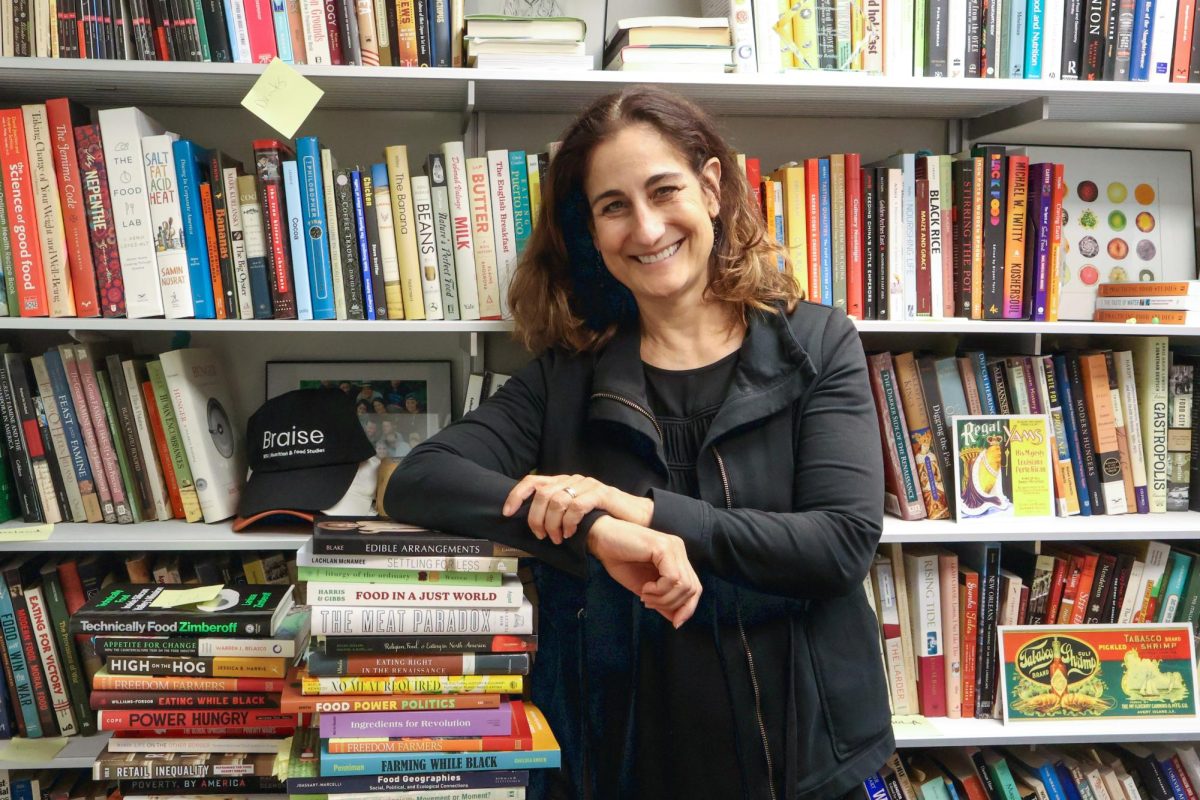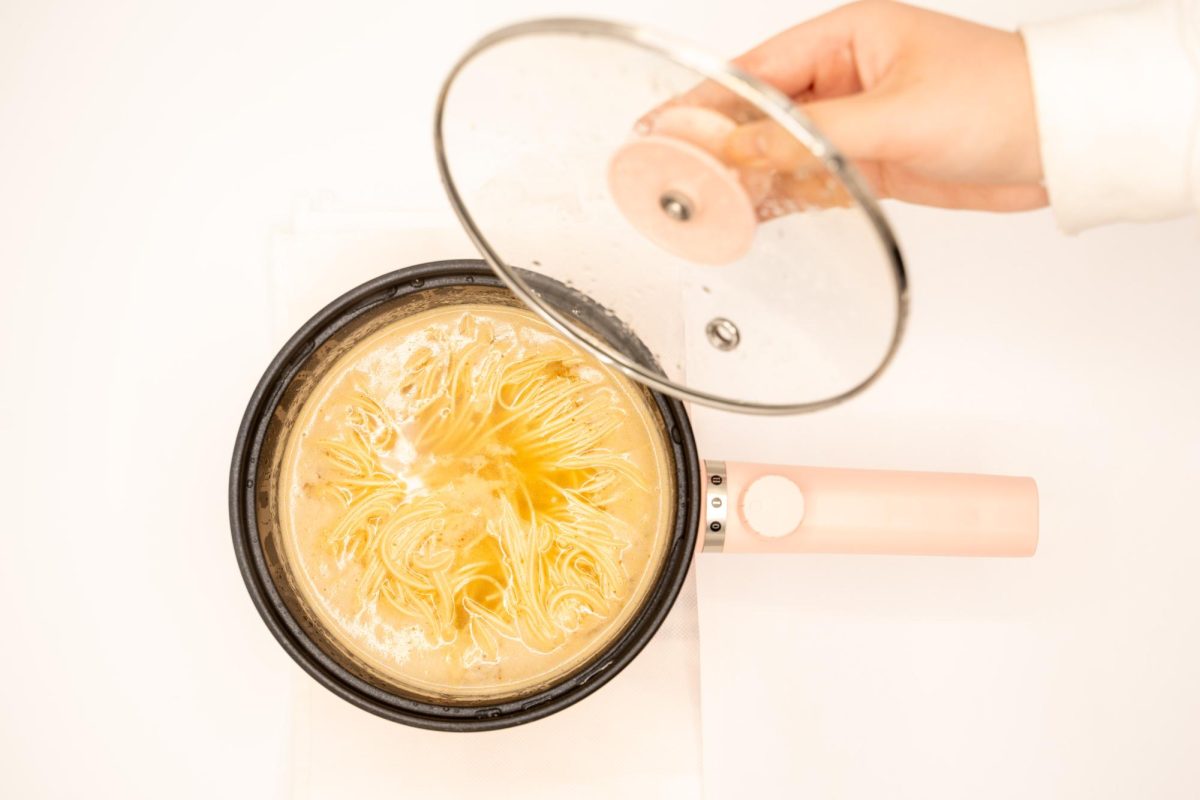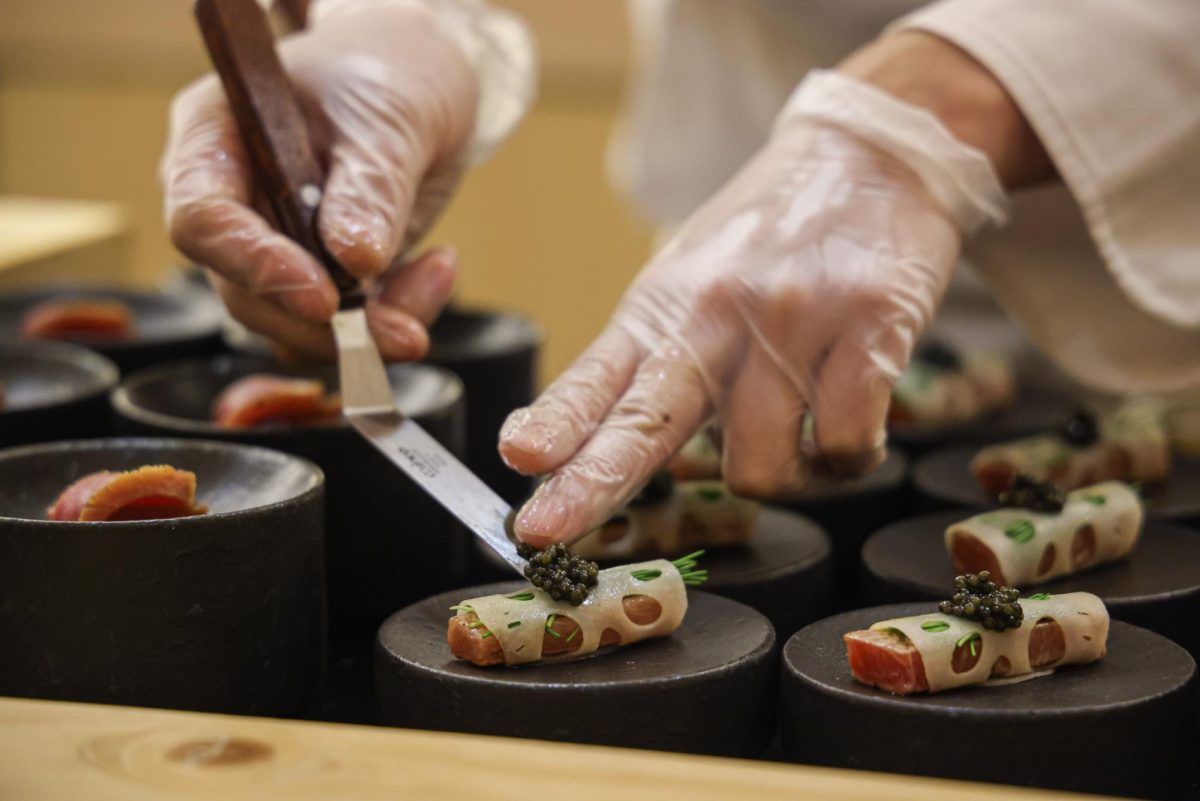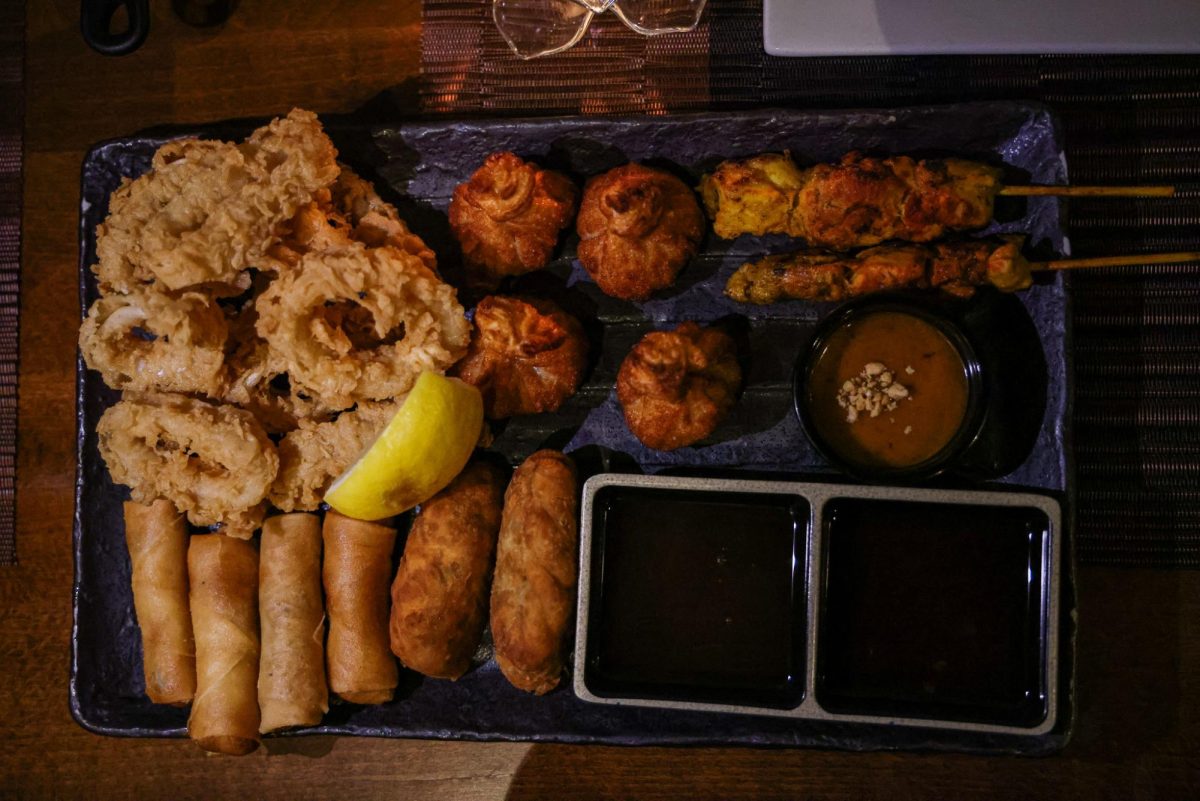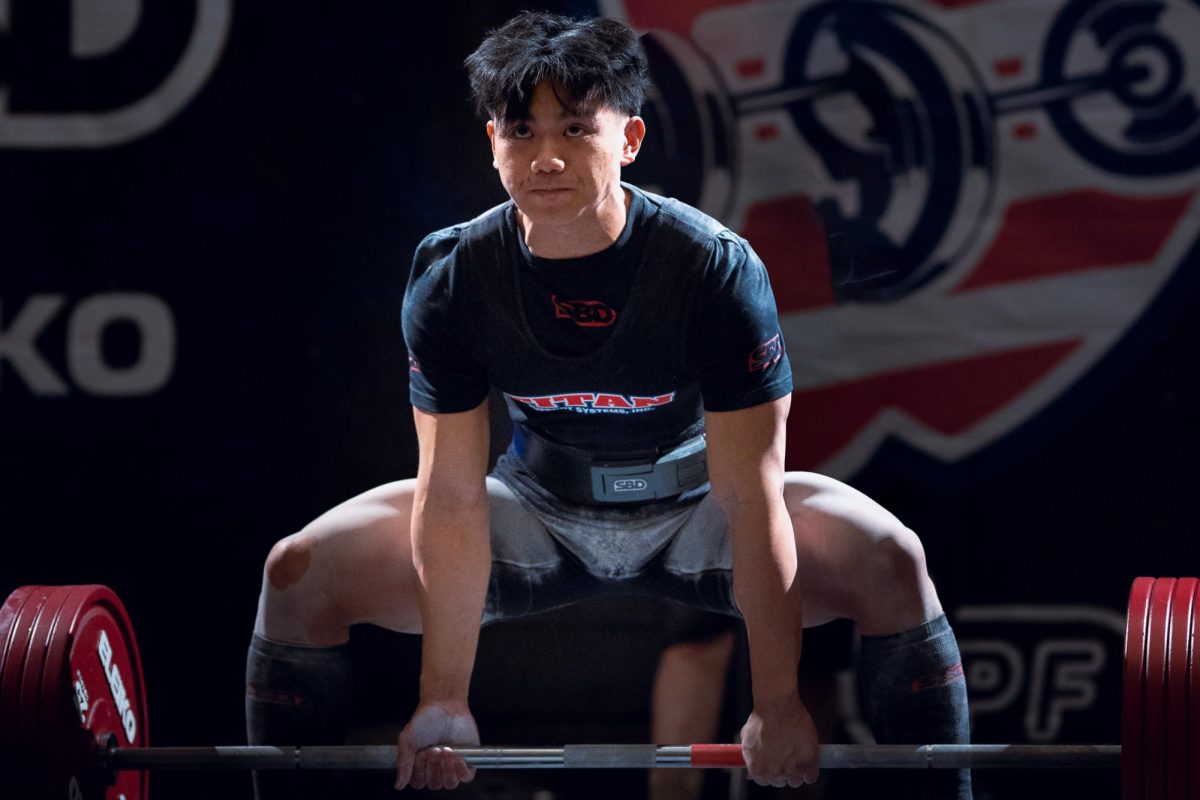Almost like Hawthorne in “The Menu,” Restaurant Yuu offers an open-kitchen view accompanied by seasonal French-Japanese fusion dishes that are unlike any other in New York City. The similarities were striking, minus the killing, of course. Although the tasting menus came at a hefty price —$250 per person — for special occasions and that special someone, the chefs and staff made it more than memorable.
Chef Yuu Shimano opened his omakase restaurant on May 19, 2023 — his 41st birthday. He chose to situate his restaurant in Greenpoint because it combines “two sides of calm atmosphere and youth culture in Brooklyn, New York.”
Chef Shimano creatively fused Japanese and French cuisine together in his menus. His spring tasting menus are based around an assortment of seafood sourced from around the country — Monterey Bay abalone and New York clams, to name a few — as well as a medley of locally sourced vegetables. Other ingredients are sourced internationally, including white asparagus from southeastern France and ikura, or salmon caviar, from Japan.

The restaurant offers its 15-course tasting menu along with a 14-course vegetarian option for the same price. Once seated, guests received menus personalized with their names. WSN was asked to review the vegetarian menu.
Served first on the vegetarian menu was the kabocha bisque in a small cup, and the Japanese pumpkin made for a creamy, warming and smooth-tasting light soup.

Once everyone in the restaurant had finished their servings, the curtains shot up to reveal chef Shimano and his staff, ready to welcome their guests and start dinner service.
The vegetarian menu’s standout starter was definitely the kohirabi, which was thinly sliced to sandwich a delicate, nutty shiitake mushroom paste.
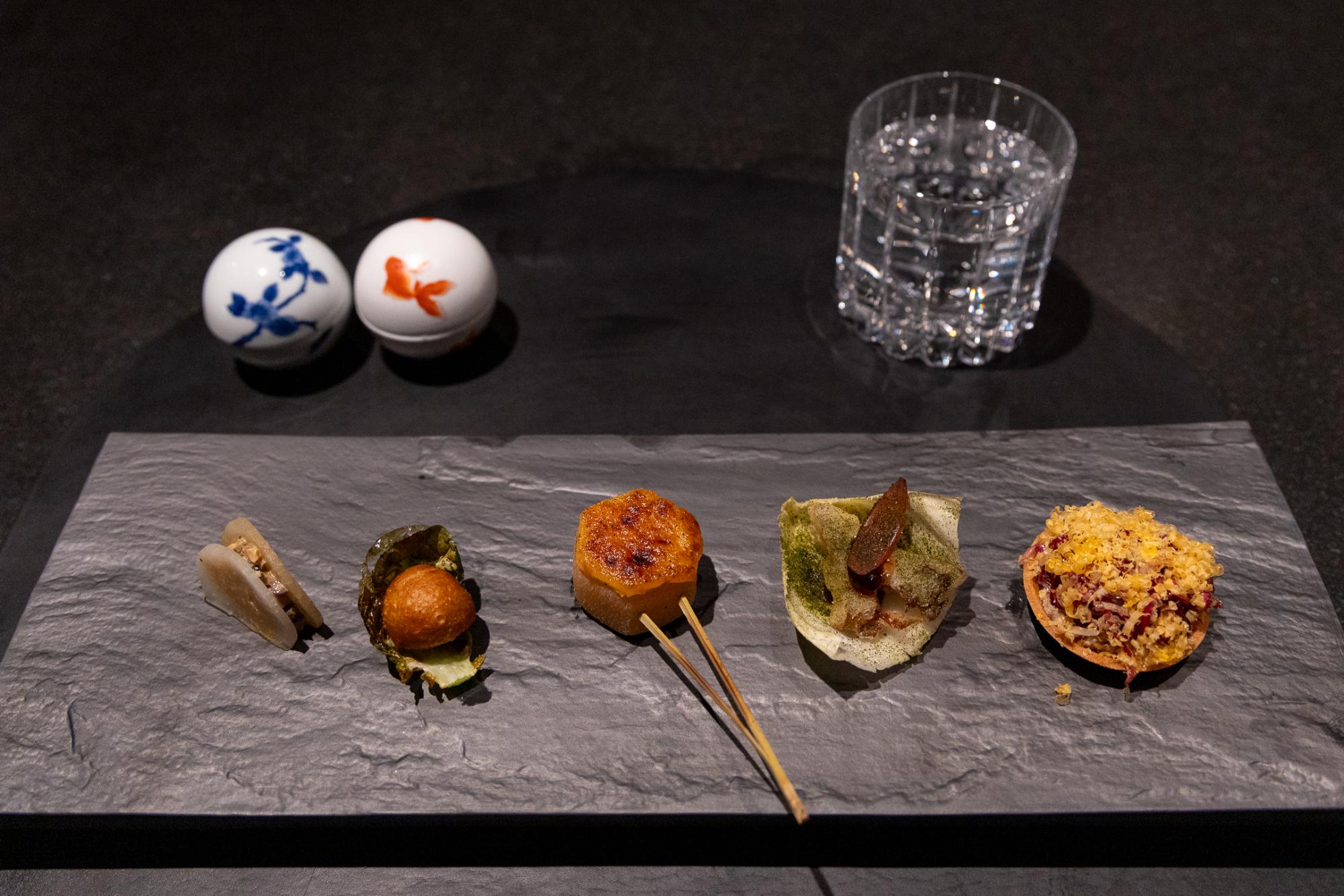
The sugar snow pea was light and wasn’t very sweet, despite the name. I found chef Shimano’s use of nama yuba, or soybean skin, fascinating as it almost dampened the taste of peas so it was not so overwhelming.
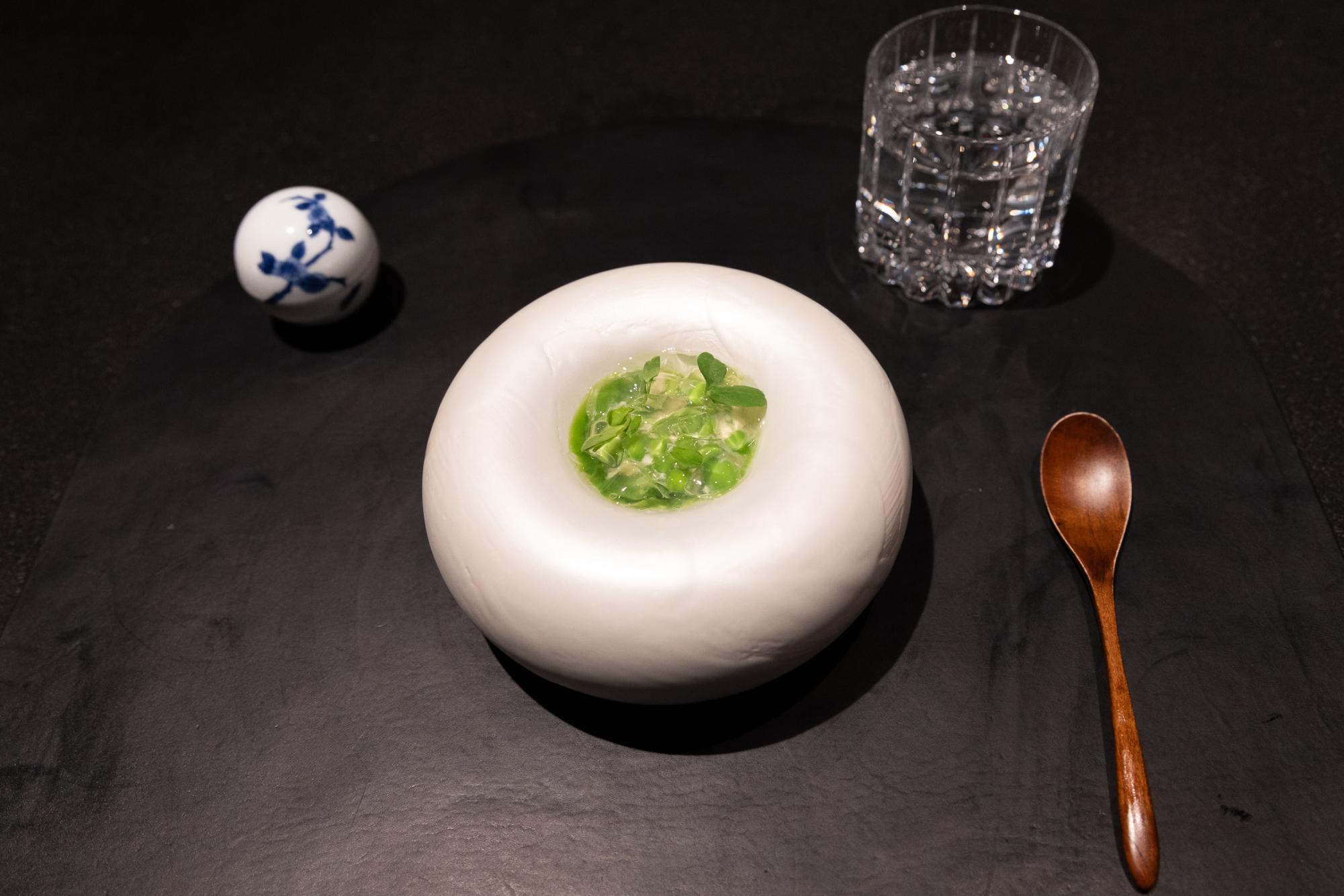
A tomato gazpacho with raspberry topped with basil shaved ice was next. The basil added another leafy-green dimension to the tomato soup. It was an excellent palette cleanser for the upcoming middle courses. The non-vegetarian version featured smoked mackerel, which overwhelmed the taste of the soup.
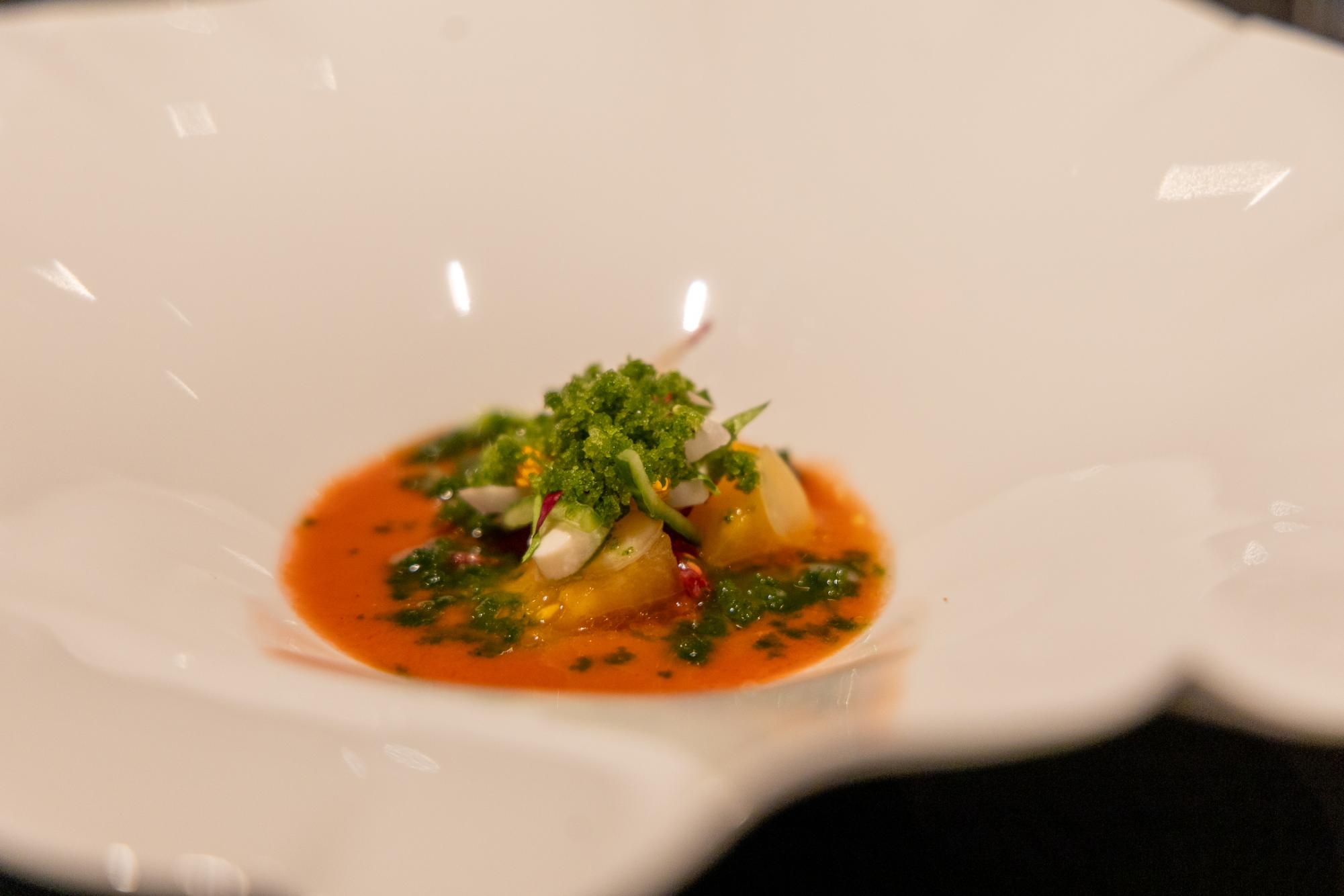
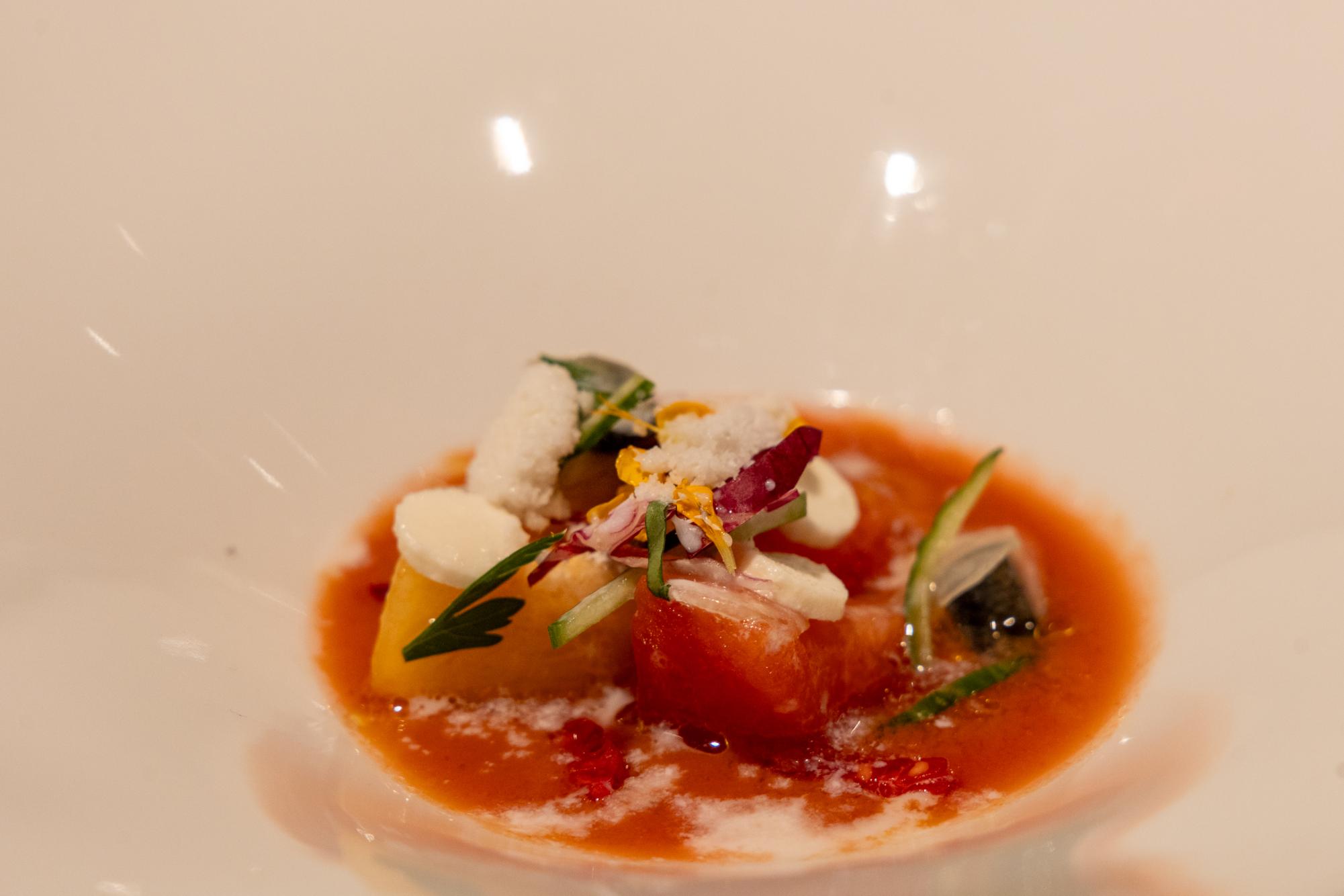
Next is where the non-vegetarian menu served two dishes — the surf clam and arctic char — compared to the vegetarian menu’s miso-marinated zucchini. The zucchini, which was topped with marinated and dehydrated seaweed bits, was an excellent first bite. It was not too soft nor crunchy, while the sauce was rich and creamy.
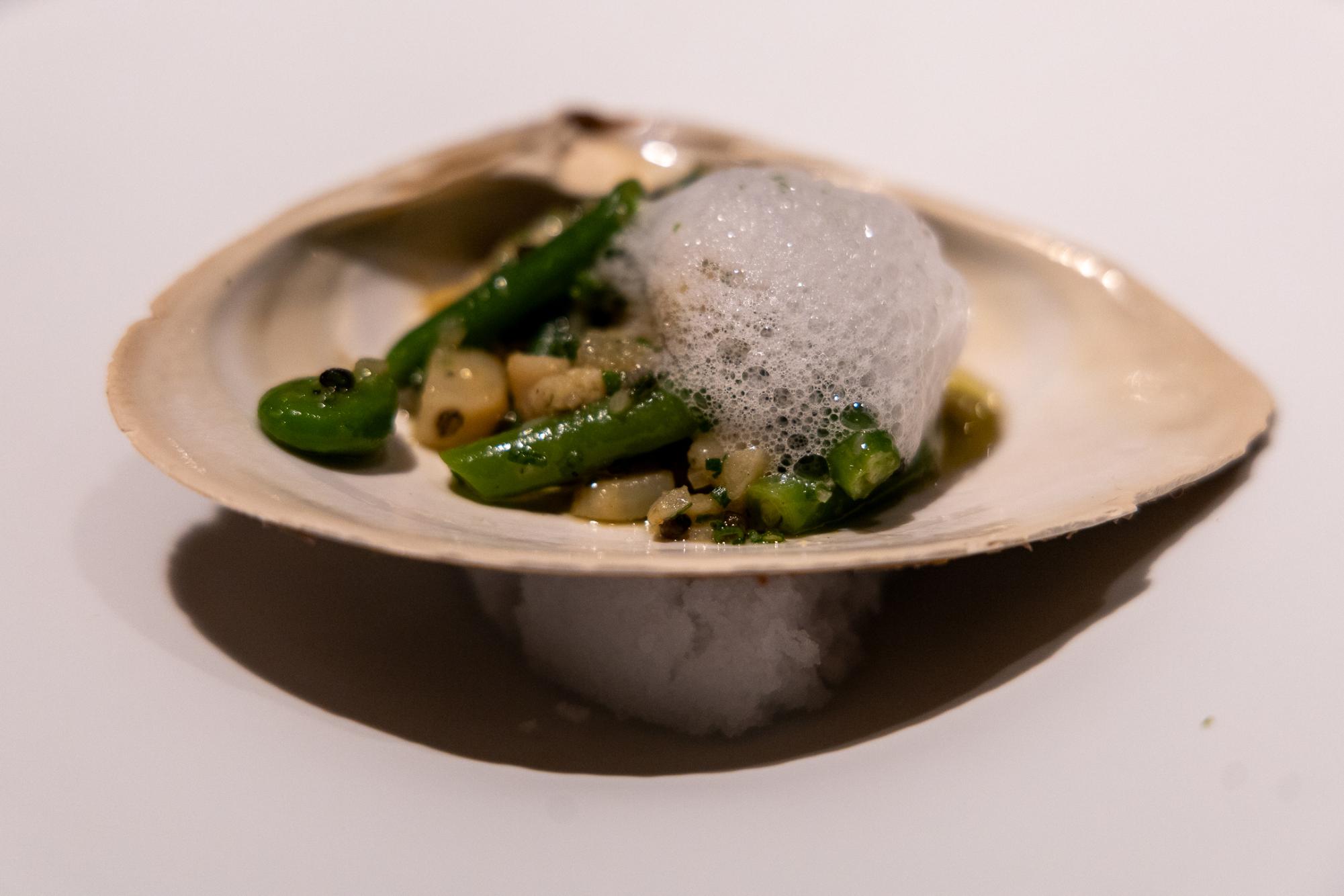
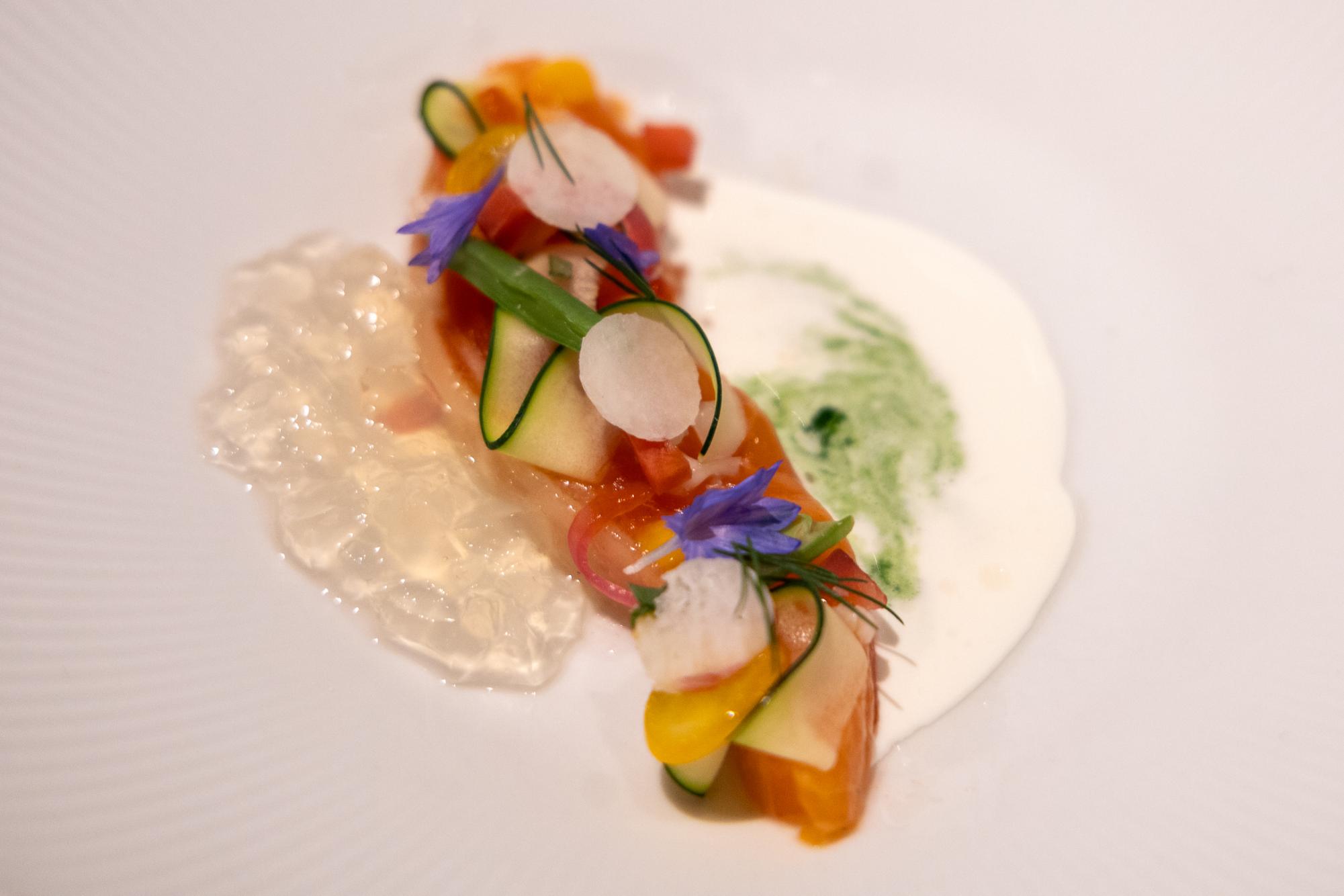
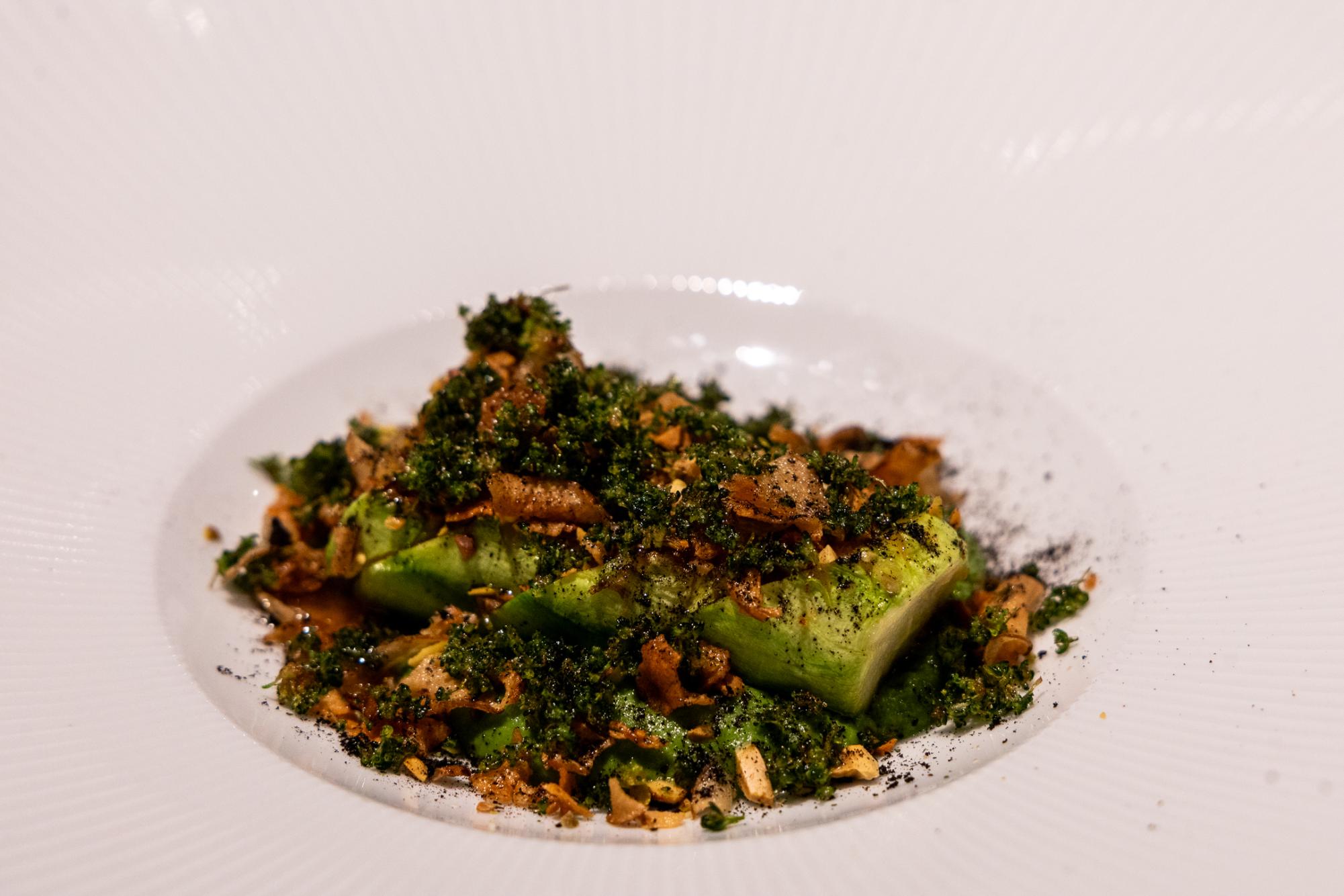
Continuing with the middle courses, both menus served baked white asparagus in fresh panko with Pedro Ximénez wine grape drizzle and Cara Cara orange gelée to pair. The panko wasn’t too crunchy, which allowed the asparagus’s texture to be the main focus — almost felt like chef Shimano’s own take on white asparagus tempura.

Starting the heavier courses was chef Shimano’s signature abalone risotto from the regular tasting menu, using Koshihikari rice — a premium Japanese short-grain rice — kombu dashi and bamboo shoots. The first bite was very hearty and reminded me of a home-cooked porridge made by my grandma back home. The abalone was fresh, crispy and, coming from someone who isn’t the biggest fan of it, was surprisingly tasty. It balanced the creaminess of the risotto with the saltiness of the sea.
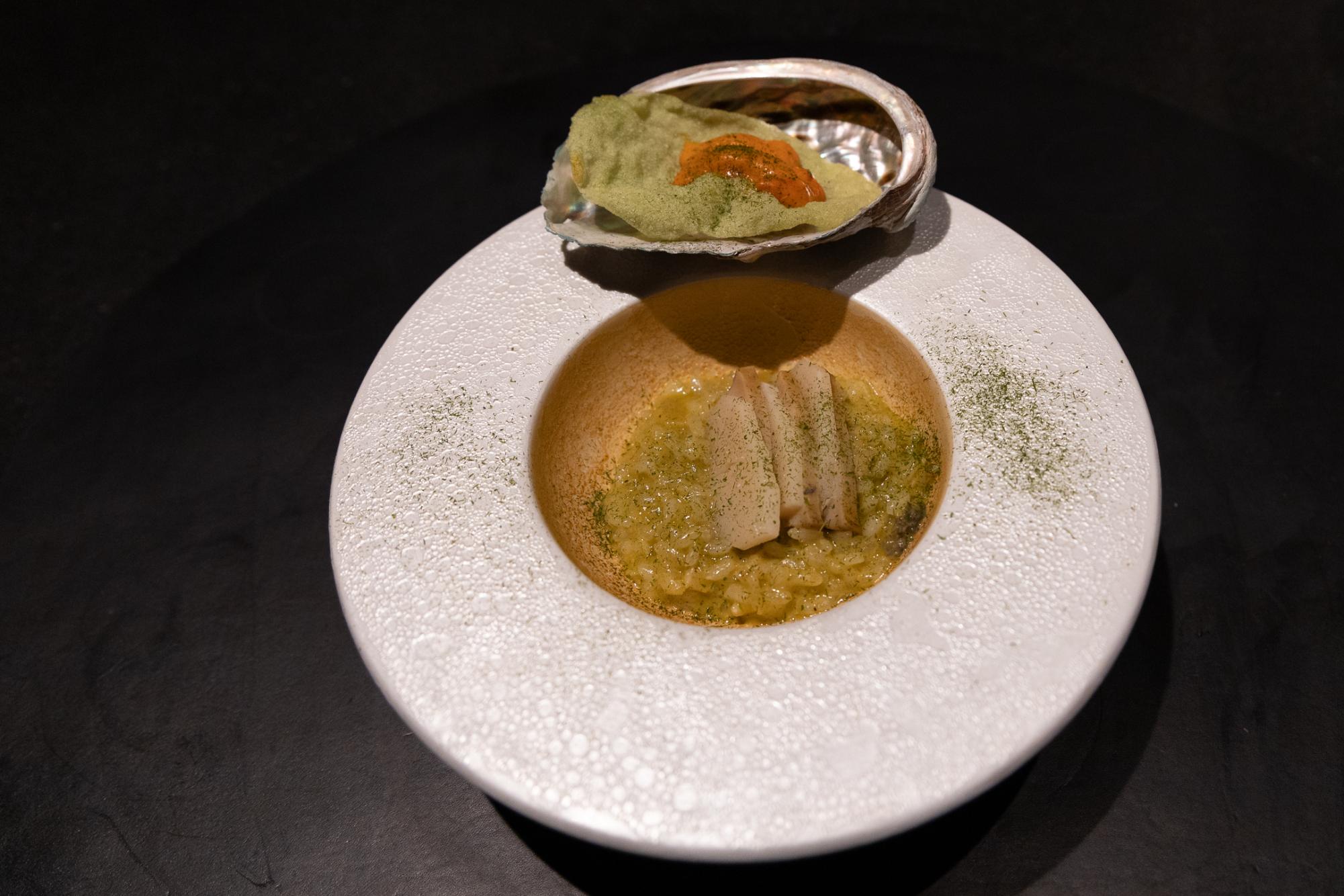
The vegetarian spring risotto used Tsuyahime rice for more umami flavor and was covered in a bamboo shoot netting that added crispiness to the dish. It was equally as hearty and rich in flavor.
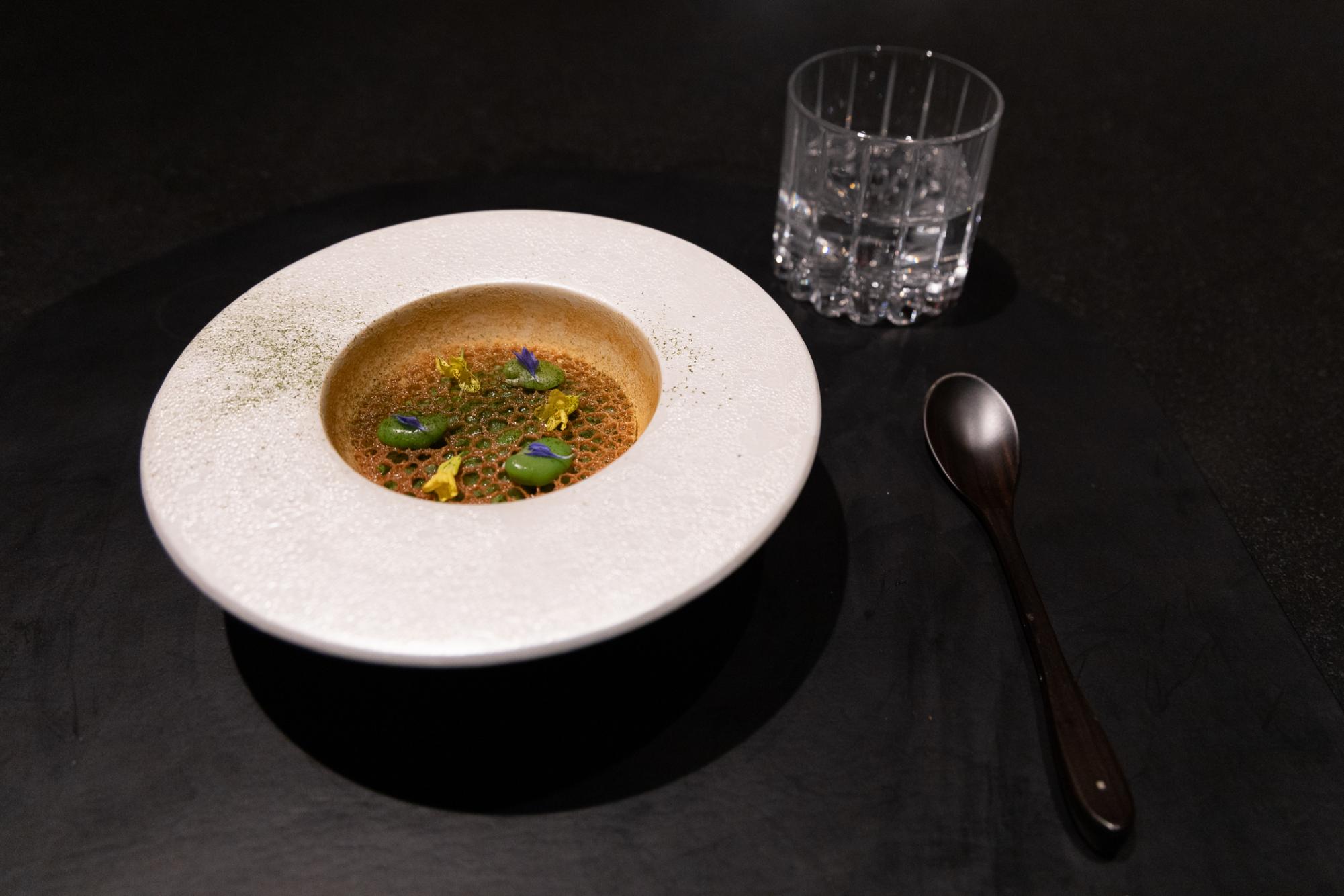
The middle courses featured red pepper farci, stuffed lentils and coriander seeds cooked in a kanzuri paste. The red pepper was chargrilled nicely, and the pepper was soft but still crunchy enough. The lentils were spicy and tender, but also sweet, and broke apart when bitten.
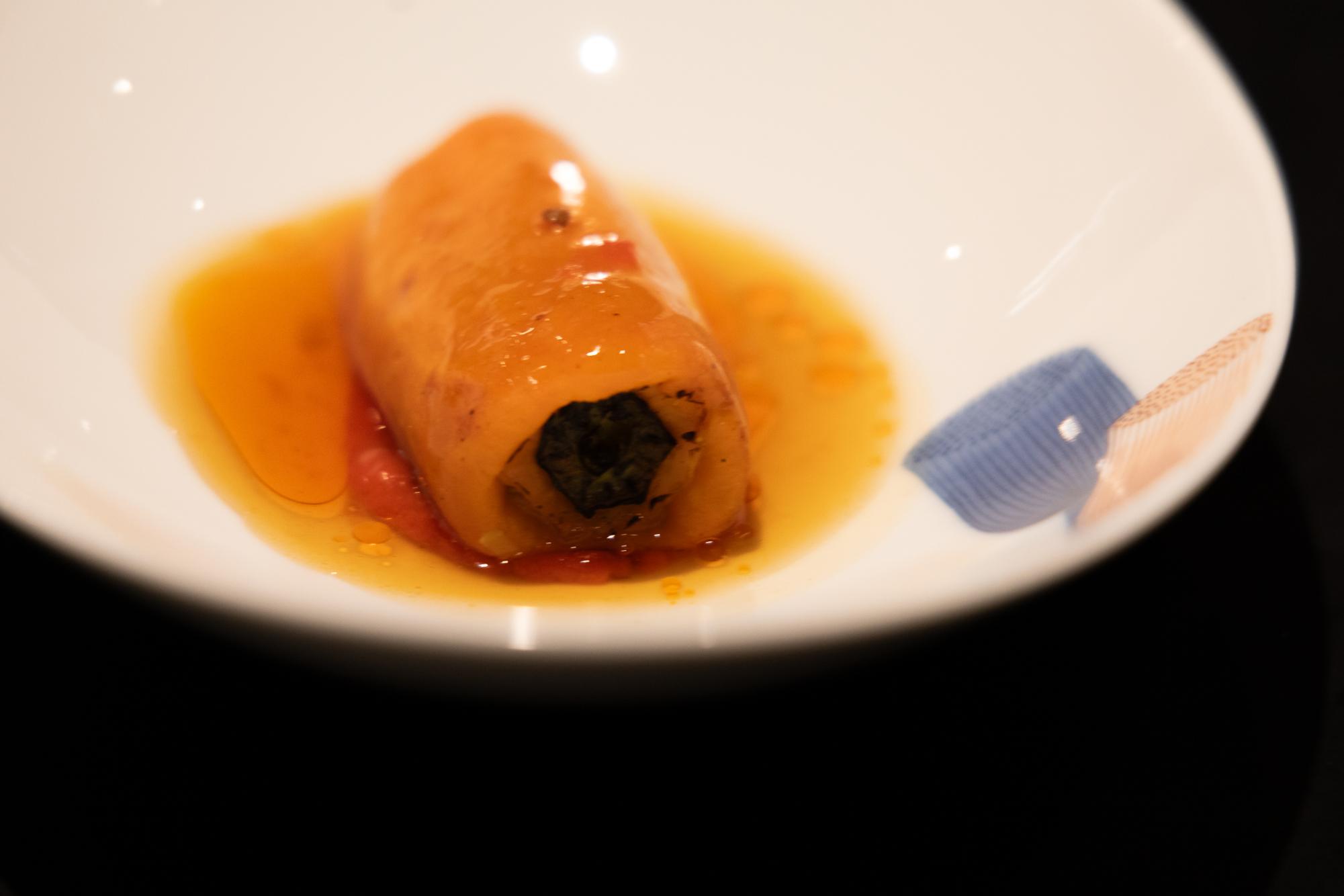
The onion brioche bun to separate the previous courses from the latter savory ones was “the best bread I’ve ever had,” said my accompanying photographer, and I would agree. It was a satisfying crunch in the first bite, and the bread was soft and easy to pull apart. It was paired with a nori butter that was mildly salty and married well with the soft puff pastry.
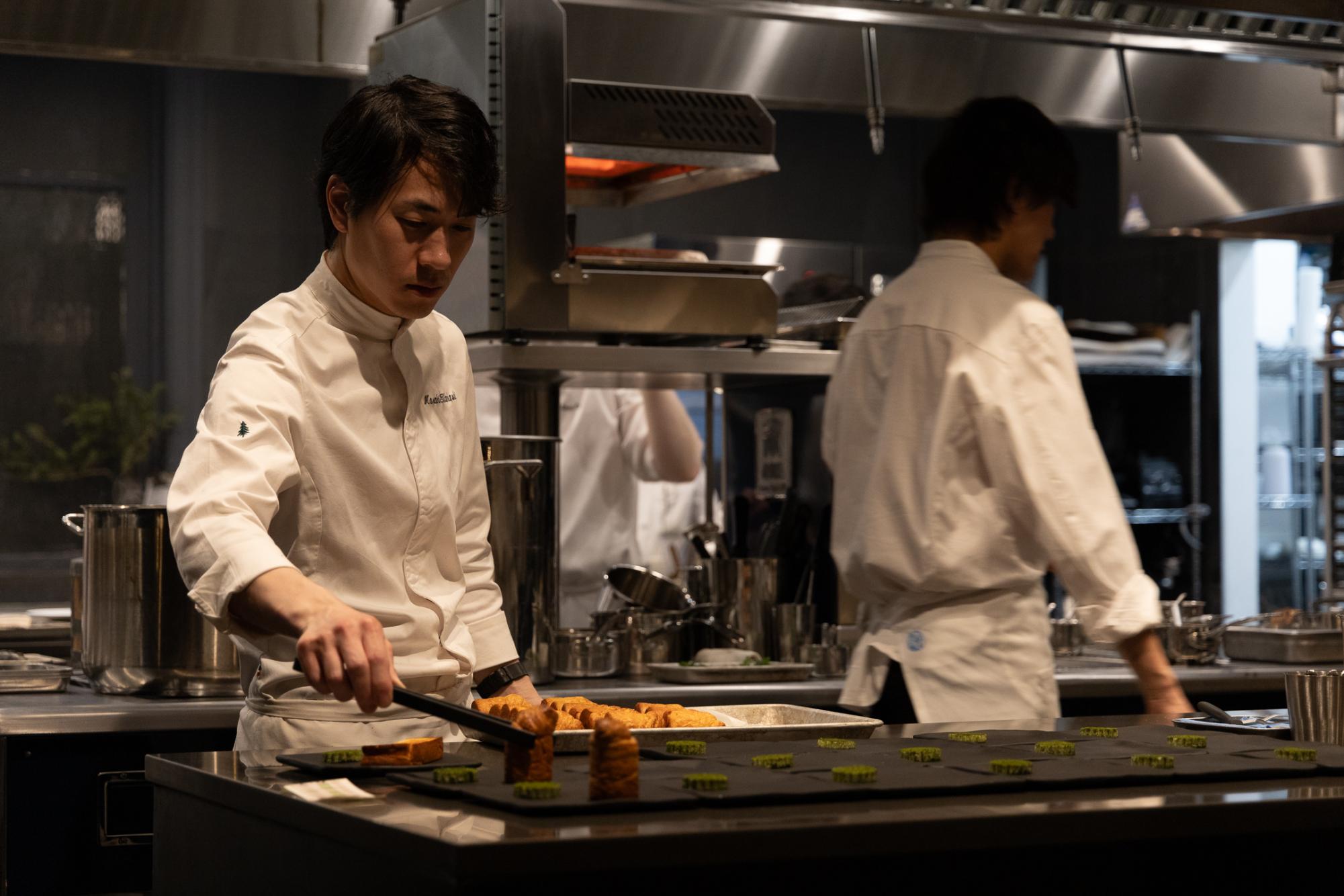
To start the vegetarian entrees, chef Shimano created a celeriac tempura with salt-baked celery roots that were fried in almond oil and served with crème fraîche. It was a heavy taste, but the almond oil was a nice touch as it made the taste smoother.
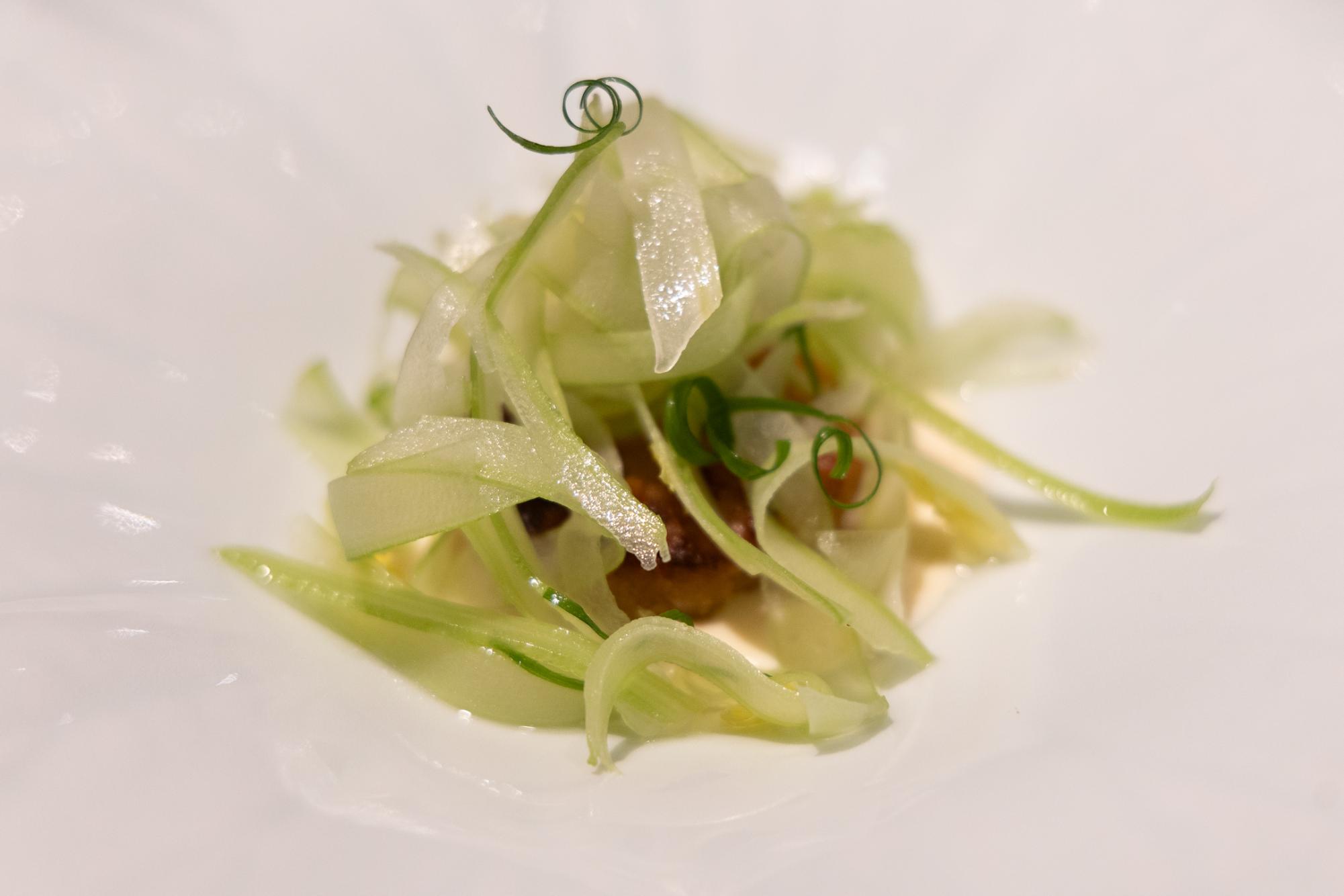
Next was the choux farci, a cabbage and cauliflower slice served with blue cheese and navy beans.
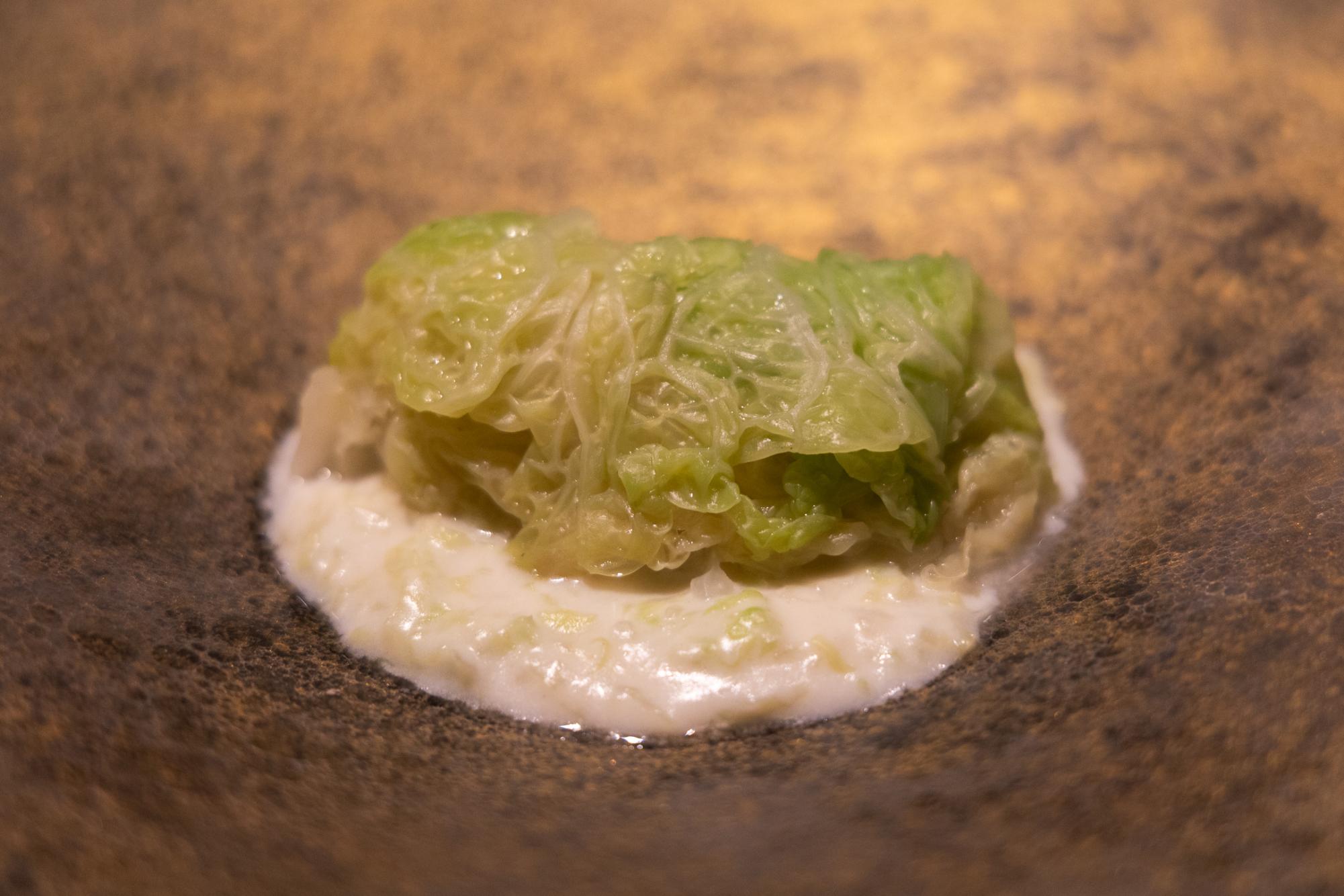
Last, but most importantly, chef Shimano created his own vol-au-vent in a small Japanese tea-cup-sized pastry that had that gratifying first crunch. The pastry was warm, flaky and paired with an espresso sauce that made it a must-try.
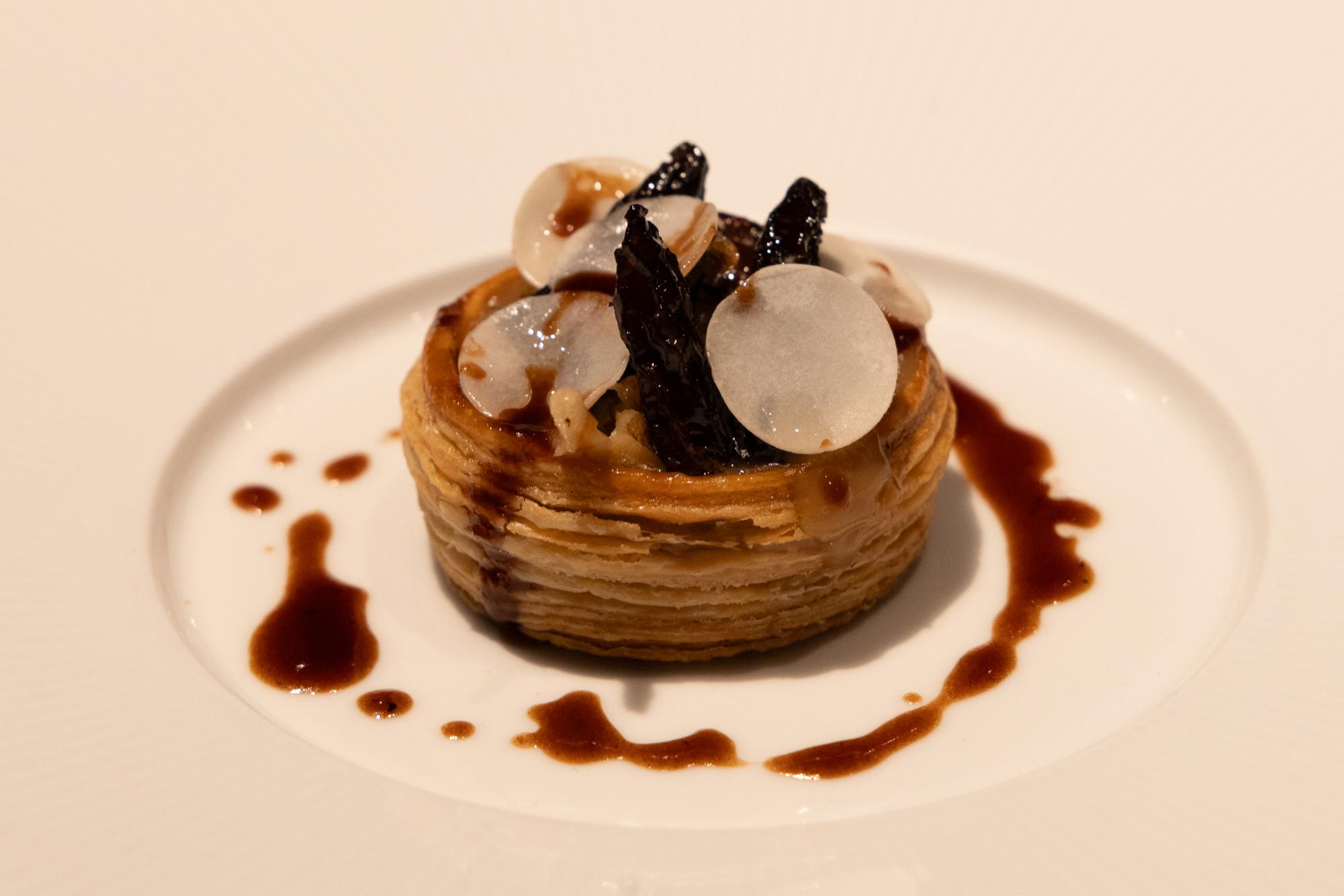
On the standard menu was the chef’s signature Canard, a duck wellington that was dry-aged for 35 days, where two layers of meat are divided by a layer of foie gras and three types of mushrooms. It was cooked to a perfect medium-rare and wrapped in the same pastry as the vol-au-vent. It was decadent and almost tipped me into a food coma by the end of it.
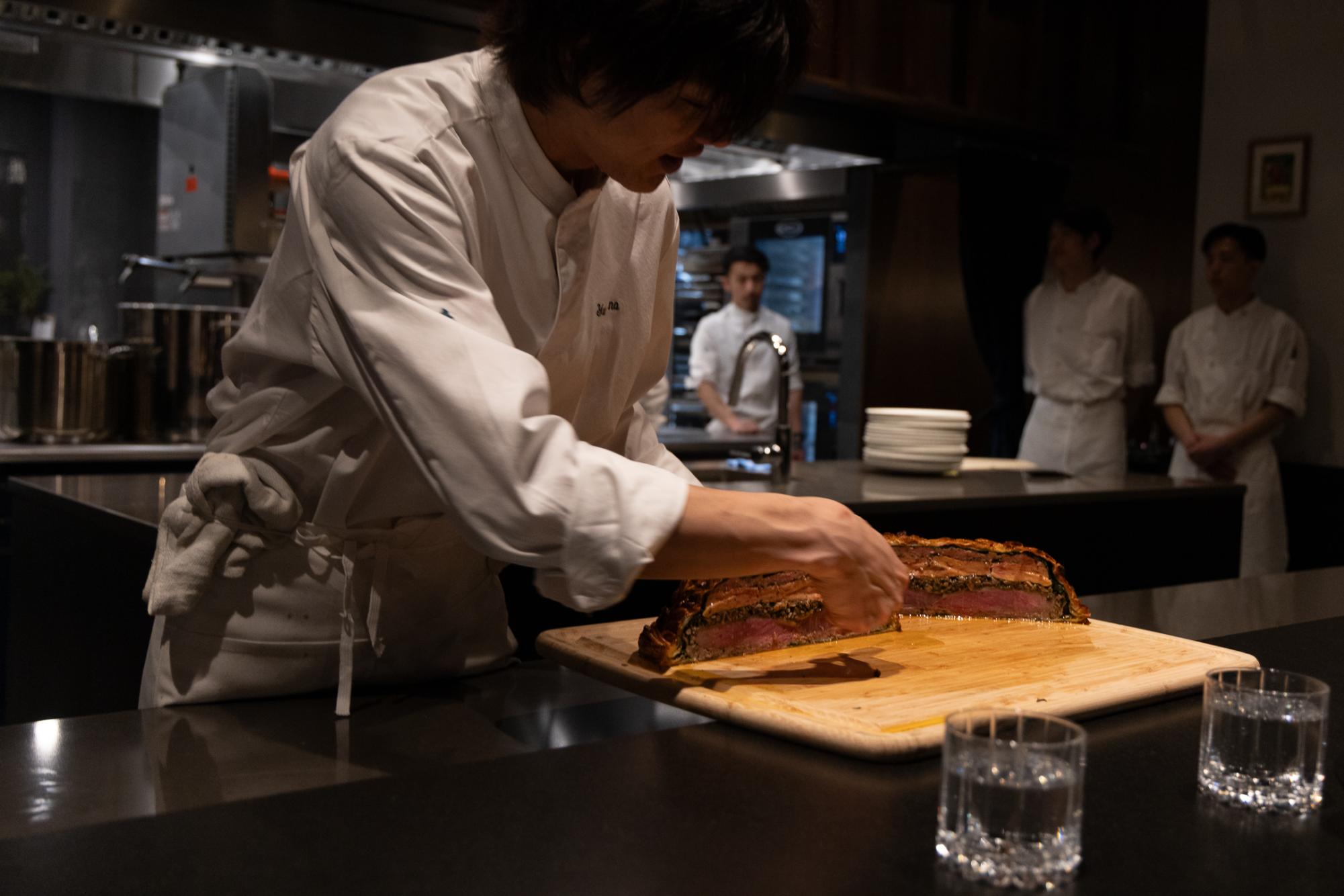
But chef Shimano was not finished, as dessert was to follow. He showed off mint in three different ways — oil, foam and ice cream. The ice cream was sweet and soft, while the foam was citrusy and popped in your mouth. Both were served on a bed of jelly, which added a nice bite to the dessert.

To end the meal, the chefs served Sakura, which is a dessert meant to represent the sakura leaves falling in the spring in Japan, as they sprinkle edible pink flower petals onto a meringue cup topped with gloriously red strawberries. It ended the meal on a very high note, and is something I would highly recommend to those who love strawberries. The meringue was flowery and, paired with the tartness and the acidity from strawberries, created a lovely dessert.

Guests are then moved back to the lounge area and are served the night’s “mignardises,” or pastries, with hojicha, Japanese green tea. Pastry chef Takahashi Masaki makes them each night and sends guests home with two more cakes in a goodie bag that comes with the bill. Restaurant Yuu is in the upper echelons of fine-dining omakase restaurants in New York City, and, if given the chance to eat here again, I’d jump straight at it and on the L train.
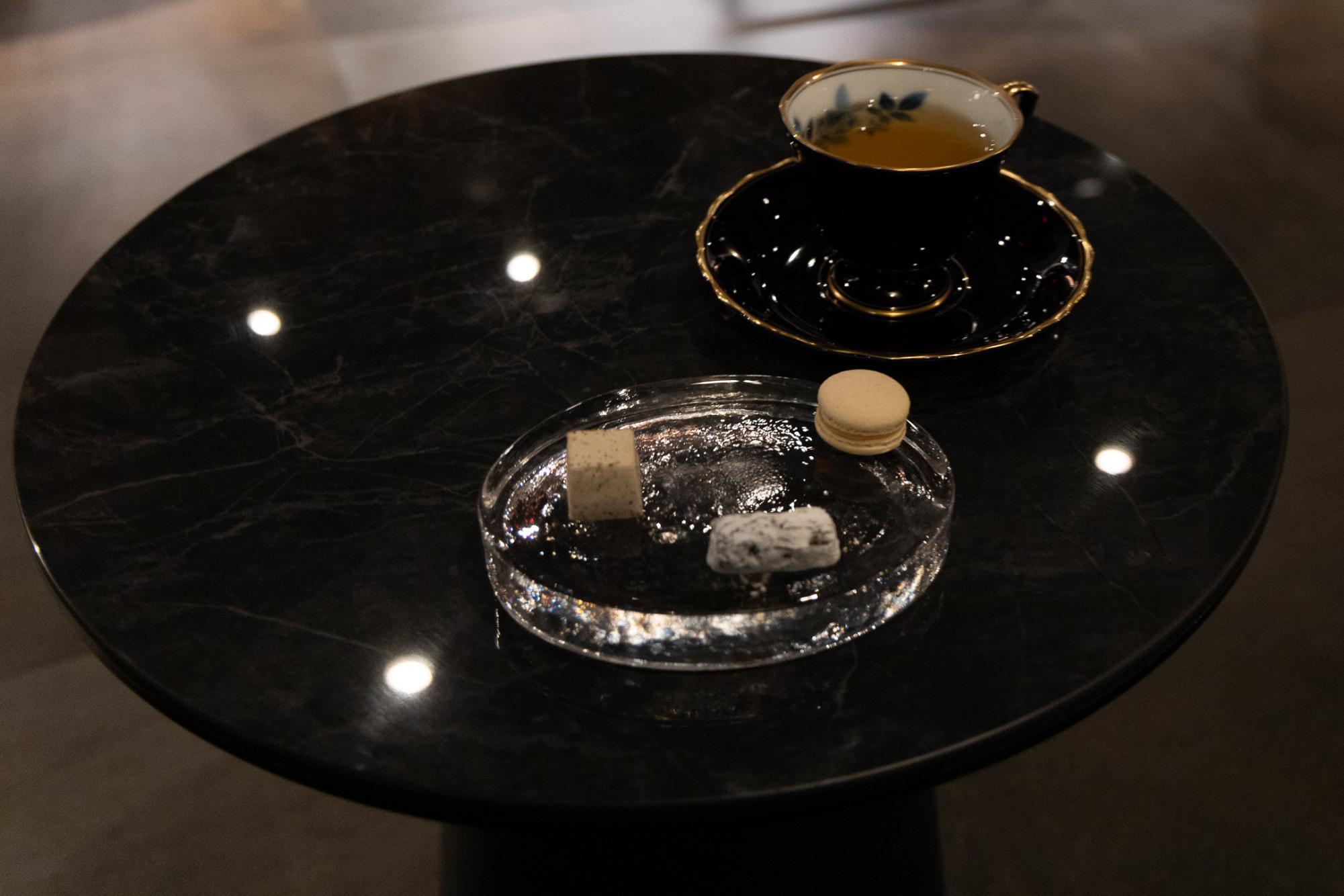
Contact Jonathan Mak at [email protected].






























